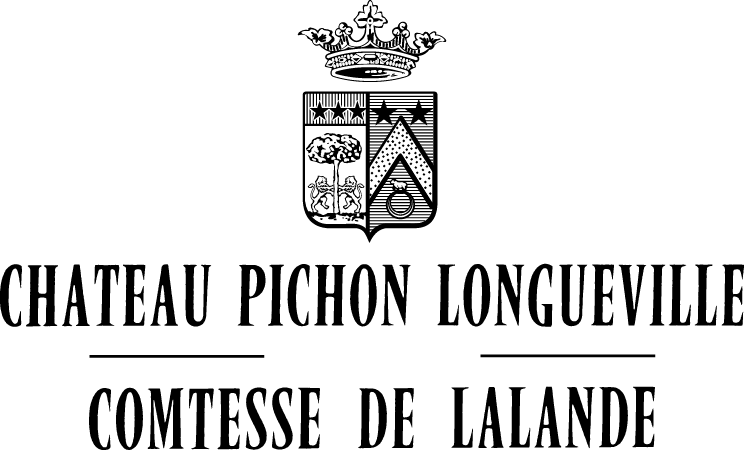Château Pichon Comtesse Réserve de la Comtesse
Pauillac, France
Vintage:2019 (Current)
2015 (Past) | 2016 (Past) | 2017 (Past) | 2018 (Past) | 2020 (Current)
Tech Sheet Download Download PDF with Scores Download PDF without Scores

- D
- JS
- TWI
- V
Reviews
Vinous Media
90 Points
February 2023, Neal Martin
“The 2019 Réserve de Pichon Comtesse has an open-knit, slightly meaty bouquet with dried blood infusing the brambly red fruit. A little rustic in style. The palate is medium-bodied with grainy tannins, moderate depth, off-dry with a nicely proportioned, pencil shaving-tinged finish. Fine. Tasted blind at the Southwold annual tasting.”
The Wine Independent
92 Points
May 9, 2022, Lisa Perrotti-Brown
“The 2019 Reserve de la Comtesse is composed of 51% Cabernet Sauvignon, 46% Merlot, and 3% Cabernet Franc. Deep garnet-purple colored, it opens with savory notions of smoked meats, tapenade, and sauteed herbs, giving way to a core of red and black currants, pencil shavings, and cracked pepper with a waft of cumin seed. Medium-bodied, elegant, and with impressive savory layers, it has a fine-grained texture and earthy finish.”
JamesSuckling.com
93 Points
January 2022, James Suckling
“A pretty red with blackberry, cherry and currant. Some chocolate and walnut, too. It’s medium-bodied with integrated tannins and a polished finish. Hazelnut at the end. Drink after 2024.”
Decanter
93 Points
May 24, 2020, Jane Anson
“This is well structured and approaches 2010 in terms of its weight and depth of fruit. Deep spiced damson on the nose, you would be hard pressed not to say that this is as good as very many Cru Bourgeois 1st wines. Huge depth, similar to the 2018 but a little higher acidity, a little less round, a little more classic Pauillac in character. This is confident and serious with lots of tannins. A great 2nd wine, and a reminder of the consistently successful winemaking that is happening at this estate.”
Overview
The second growth of Château Pichon Longueville Comtesse de Lalande, the Réserve de la Comtesse, was created and sold for the first time in 1973. Second growths represent between 20 percent and 50 percent of the total production of the Château. From the same soil, the second growth benefits from the technology and reputation of the great wine. The archives kept at Château Pichon Longueville Comtesse de Lalande mention the existence of a second wine as early as the 19th century.
The vast majority of the vineyards are Gunzian gravel mounds of the classic Pauillac composition, with the deep bed of gravel placed over a substrata of clay and limestone. The commitment to sustainable farming practices extends throughout the 220 acres of vineyards, with over 27 acres fully converted to organic viticulture, and 37 acres farmed biodynamically.
Tasting Notes
The nose fluctuates between Pauillac sap (cedar, graphite), fruit (ripe strawberry) and flowers (lily of the valley, lilac). Raising expectations of a rich and juicy palate. Unsurprisingly, we find the same impressions in the mouth. Long and sappy, the wine is velvety, held taut by a lovely acidity and driven by an almost physical sensation of tannin. The red fruits (strawberry, cherry) are combined with sandalwood and cedar, a confirmation of the Pauillac terroir.
Harvest Notes
The years go on ... but they are never the same! This is what makes our wine profession so rich: we are constantly adapting and questioning ourselves to truly reveal the soul of our terroir. 2019 was a very sunny year with major drought. This vintage is characterized by a vibrant and mineral tension, a fullness and balance between power and elegance: a new interpretation of Pauillac by Pichon Comtesse...
With temperatures above seasonal averages, the Winter was mild and unusually dry. Under these conditions, the bud break was particularly early, from March 20th. The coolness and rainfall in the Spring slowed down the development of the vine, and adjusted back to its average period of flowering between the end of May and the beginning of June. The unstable Spring weather, caused slight coulure on the Cabernet, around mid-June. The heat and the sun then settled in for the duration. A little rain in mid-July and early August favoured a rapid and homogeneous veraison from the 9th to 14th August. Slow ripening, with dry, very sunny conditions and cool nights allowed the harvest to start on September 16th in a very healthy vineyard. Weather instability returned at the end of September and lasted until the end of the harvest on October 8th, without impacting on the quality of our grapes.
Technical Information
Varietals: 51% Cabernet Sauvignon, 46% Merlot, 3% Cabernet Franc
Wine Alcohol: 14.35%
pH: 3.70
Soil Composition: Gravel, clay and sand
Average Vine Age: 35 years
New Oak: 40%
Aging: 12 months
